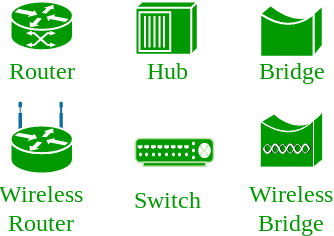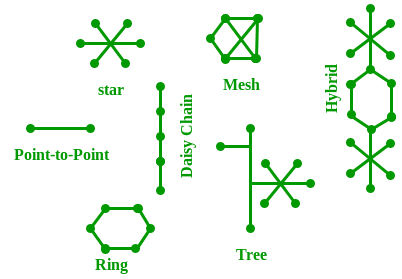computer networks
Computer Network: An interconnection of multiple devices, also known as hosts, that are connected using multiple paths for the purpose of sending/receiving data or media. Computer networks can also include multiple devices/mediums which help in the communication between two different devices; these are known as Network devices and include things such as routers, switches, hubs, and bridges.

Network Topology: The layout arrangement of the different devices in a network. Common examples include Bus, Star, Mesh, Ring, and Daisy chain.

OSI: OSI stands for Open Systems Interconnection. It is a reference model that specifies standards for communications protocols and also the functionalities of each layer. The OSI has been developed by the International Organization For Standardization and it is 7 layer architecture. Each layer of OSI has different functions and each layer has to follow different protocols.
The 7 layers are:-
- physical layer
- Data link layer
- Network layer
- Transport layer
- Session layer
- Presentation layer
- Application layer
Protocol: A protocol is a set of rules or algorithms which define the way how two entities can communicate across the network and there exists different protocol defined at each layer of the OSI model. Few of such protocols are TCP, IP, UDP, ARP, DHCP, FTP, and so on.
UNIQUE IDENTIFIERS OF NETWORK
Host name: Each device in the network is associated with a unique device name known as Hostname.
Type “hostname” in the command prompt(Administrator Mode) and press ‘Enter’, this displays the hostname of your machine.

IP Address (Internet Protocol address): Also known as the Logical Address, the IP Address is the network address of the system across the network.
To
identify each device in the world-wide-web, the Internet Assigned
Numbers Authority (IANA) assigns an IPV4 (Version 4) address as a unique
identifier to each device on the Internet.
The length of an IPv4 address is 32-bits, hence, we have 232 IP addresses available. The length of an IPv6 address is 128-bits.
Type “ipconfig” in the command prompt and press ‘Enter’, this gives us the IP address of the device.
A MAC address is assigned to the NIC at the time of manufacturing.
Topic Participants
Divya S